Our God is One and His great name is One,
Thus may our enemies all be undone.
When our Master said the words “Our God is One and His great name is One,” a great dread fell upon him. He placed the prayer book on the table, put his head down upon it, and stood there trembling. A few moments passed until he again picked up the prayer book and chanted
All who are pleasant to behold…
when he stopped and handed the prayer book to Reb Ḥizkiah. Reb Ḥizkiah stood there, not knowing if our Master simply wanted to pause and finish the prayer or if he wanted him to complete it. Our Master then with great effort chanted word by word the rest of the prayer as I held in front of him the tablet on which it was inscribed.
When he finished, an argument arose over whether our Master had said “proud head from his body the keen sword did sever” or “proud head from his body the mean sword did sever.” In my opinion he said “the keen sword,” which is how it was copied on the tablet. It was inappropriate that someone had erased “keen” and written “mean.”
After the Aleinu prayer, our Master instructed the aged Reb Meshullam to say the concluding kaddish because he was a descendant of Rabbi Meir ben Isaac, who composed the Akdamut prayer for Shavuot and saved a major Jewish community, and also because he came from Ashkenaz, where there had been much persecution.
After the kaddish our Master instructed Reb Ḥizkiah, the prayer leader, to chant the piyyut “Though few in number we plead before You.” Though this poem was composed by Rabbi Meshullam ben Kalonymus for the Fast of Esther, some maintain that our Master intended it to be said on that day so as to remind God that our numbers today are diminished; others hold that he wanted it said because of what had happened to him on Yom Kippur. On Yom Kippur, during the recitation of a piyyut by Meshullam ben Kalonymus, our Master was overcome by weakness and fell asleep, and he wanted to make up for that now on the fast of the twentieth of Sivan with another piyyut by Meshullam. I am inclined to think that he did it for the honor of Rabbi Meshullam ben Kalonymus. The proof is that the next day he sent me to Reb Akiva Shas to borrow the talmudic tractate Zevaḥim, and Reb Akiva asked me if I had ever seen our Master study tractate Gittin. I asked him why he wanted to know that and he told me that the name Kalonymus is mentioned in one of Rashi’s comments in tractate Zevaḥim and in a Tosafot note in tractate Gittin. Reb Akiva showed me the place where Rashi writes “This is how the excellent Rabbi Meshullam ben Kalonymus explained it in the hour of his death.” He did not point out to me the note in the Tosafot. When I related this matter in the beit midrash, they remarked that it was odd that Reb Akiva forgot to include the note in the Tosafot at the end of tractate Menaḥot in which Rabbi Meshullam is mentioned.
I would mention here in passing that whenever our Master would borrow a volume of the Talmud, he would send as security the Sabbath candelabrum. He had both simple and symbolic reasons for doing this, the simple one being that on Friday when he would be arranging the Sabbath candles he would be reminded to return the Talmud volume, and the symbolic one because Torah is compared to light, and just as a candelabrum supports the light, so the Talmud is the basis on which the Torah rests.
More to the point, I should also note that just before the afternoon service our Master instructed that it be announced that whoever was feeling weak should go home and eat, particularly the sick and women who were pregnant or nursing, all of whom were obligated to break their fast immediately without apology. He had already sent a child who had not yet studied Talmud to go and tell the rabbi’s wife to inform Zlateh that he was ordering her to eat and drink. He ordered me to send that same instruction to my wife. Our Master knew exactly when to do this because she was then right at the point of fainting from the fast. It was no wonder that she was fasting. How could a woman who had witnessed the deaths of her father, her mother, her three brothers, and her four sisters, take pleasure from food and drink on that day? But since our Master had commanded her to break her fast, she did eat something. So great was the respect for our Master, may the memory of the righteous be for a blessing, that even tiny babies in their mothers’ wombs obeyed him. Tiny babies is an exaggeration, but certainly women and infants.
After that our Master went up to the Holy Ark, with Reb Akiva Shas and Reb Meshullam supporting him on either side. Our Master kissed the curtain in front of the Ark and the doors, and paused for a few moments. Then he began his eulogy for the martyrs of the pogroms of 1648 and 1649, all the righteous and saintly ones who met cruel and gruesome deaths, and all the other men, women, and infants, children of the Holy One, who sanctified His great Name through their deaths. He recited the names of the towns and villages that had been destroyed, and there was not one town or hamlet that he did not mention, and there was not one community of which he did not enumerate the number of Jews killed in it. Some thought that our Master used some biblical verses as a memory aid, but which verses they were was anyone’s guess. Some thought they were from the first chapter of the prophet Malachi, but exactly which verses they were was, again, anyone’s guess. I always thought they were from the book of Malachi because on the eve of the twentieth of Sivan I found our Master sitting by himself and reciting aloud the verse “ Remember the Torah of My servant Moses …”
17
As the shamash was narrating, the sun glowed crimson from the radiance of the flowers and the red hot stones of Eden, in accordance with the explanation of the reddening of the sun in the late afternoon in the Book of the Angel Razi’el. And so as the sun grew crimson, the time for the afternoon service arrived, and everyone went and washed their hands and recited the passage about the daily sacrificial offering in the Temple and then stood for the silent devotion. The evening service followed immediately. After the Aleinu prayer and the concluding kaddish, they all crowded around the shamash to find out how the matter ended.
The old man looked at them and said, “If you are so intent on listening to stories, how will you be able to hear the sound of the Messiah’s shofar on the day when it is sounded? Why do you need to know the end of the story when it was already clear from the beginning? You heard then that we have to be very, very careful not to talk during prayer and certainly not while the Torah is being read.” The shamash repeated the word “very” so intensely that everyone began to tremble at the severity of the transgression. After that they stopped asking how the story ended.
But he did not leave it at that and proceeded to tell the story to its end, and his words sank deep into their bones and stayed with them all their days. And when they passed away, they saw in another world everything the shamash had told them in this one.
18
The shamash continued:
Because I treasure every word our Master uttered, I now return to what he said. The details of the story are clear, but the depths of his teachings — who can plumb them, especially now that fifty-four years have passed since they were spoken.
And so our Master stood before the Holy Ark facing the congregation, with Reb Akiva Shas and Reb Meshullam on either side of him. I stood below facing the congregation so as to prevent anyone from pushing forward to go up the bimah, all the while keeping an eye on our Master to be ready at a moment’s notice in case he needed me.
Our Master was reaching the end of his eulogy when it looked as if his talit was falling off his left shoulder, as it often did at the end of his sermons and never did when he stood for the silent prayer, when it stayed in place all the time. I heard from Reb Shmuel the scribe that Reb Yosef Halevi, who wrote a book about the victims of the 1648–49 massacres and another about the shofar that the Messiah will one day sound, once opined that our Master’s soul belonged to those Rabbi Yoḥanan had in mind when he made the statement in the Talmud, “Would that a person might pray the whole day long.” That is why our Master’s talit clung to him even after prayer. But this was not the case after his sermons, which in our time have largely become messages of moral instruction and rebuke for the Jewish people’s shortcomings. This whole matter can be explained in different ways, and I do not want to belabor it. In any case, it seemed to me that our Master was motioning to me, so I hurried up to him.
Читать дальше
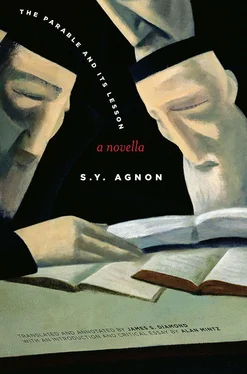

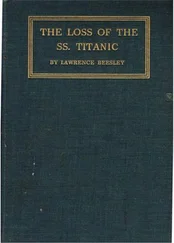
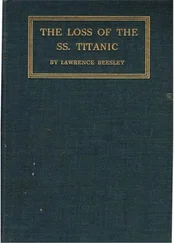


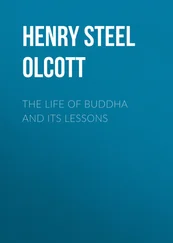
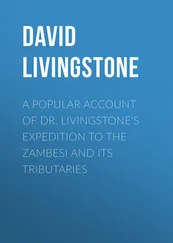


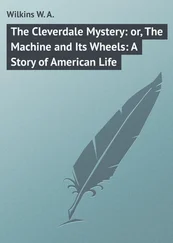

![Edward Ellis - Adrift on the Pacific - A Boys [sic] Story of the Sea and its Perils](/books/753342/edward-ellis-adrift-on-the-pacific-a-boys-sic-s-thumb.webp)